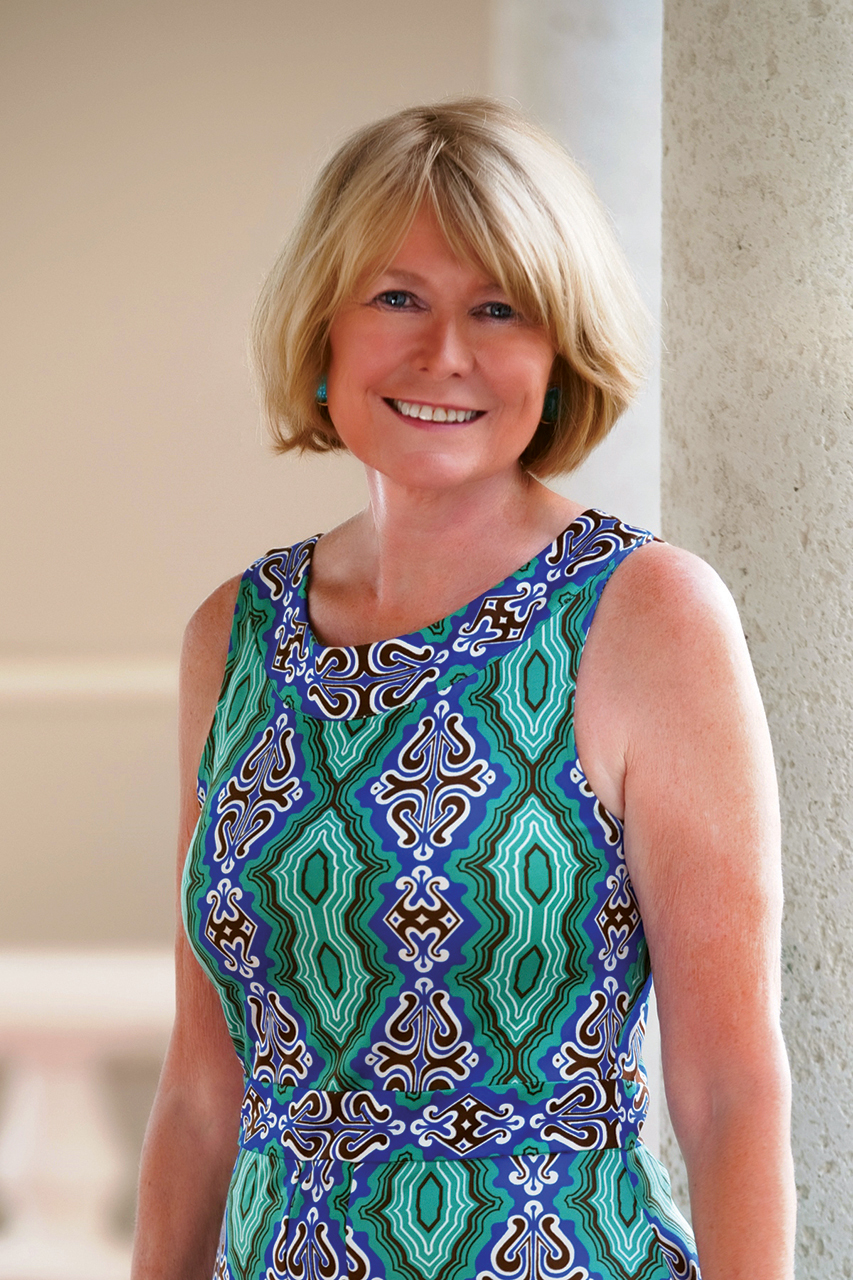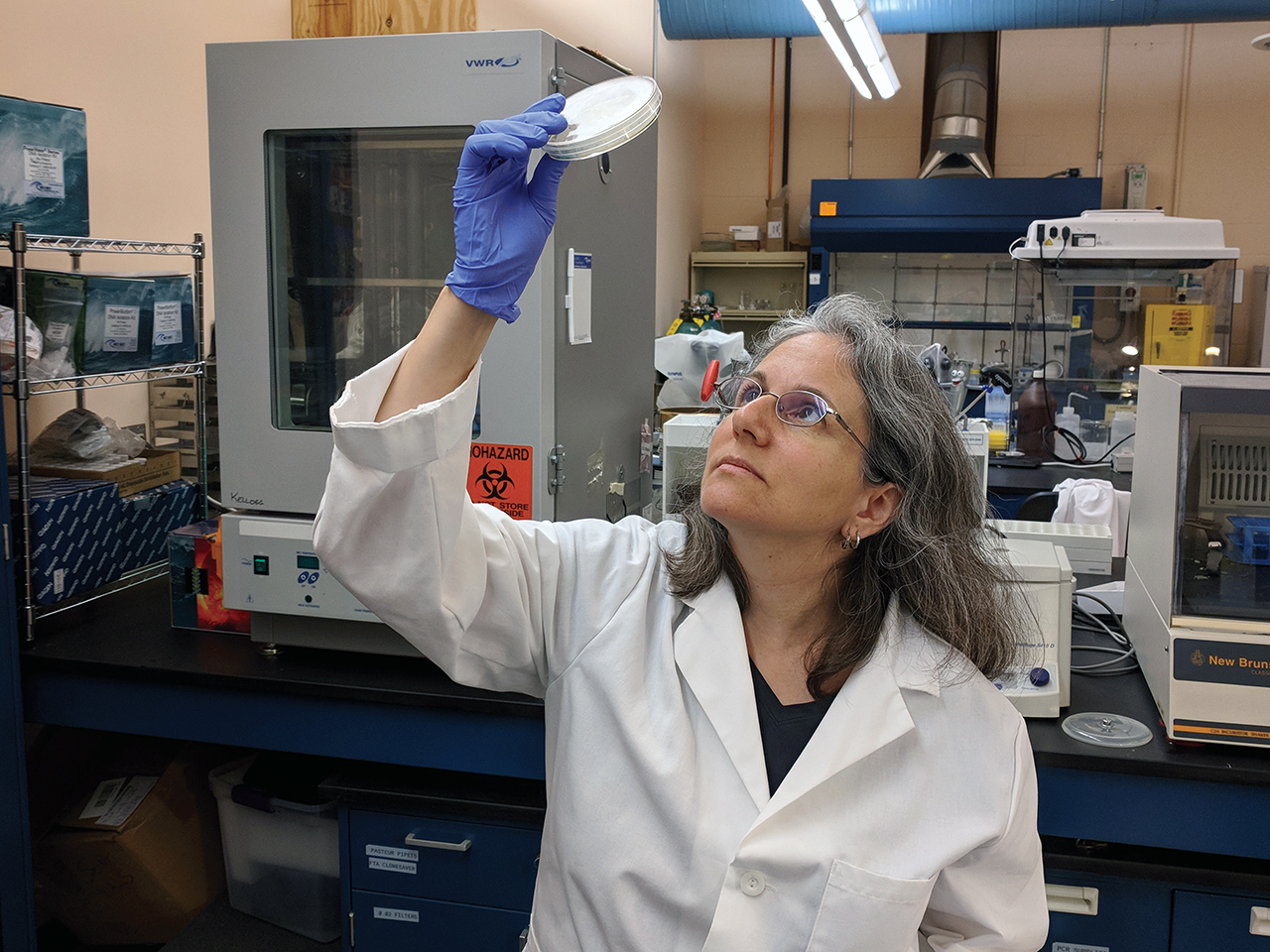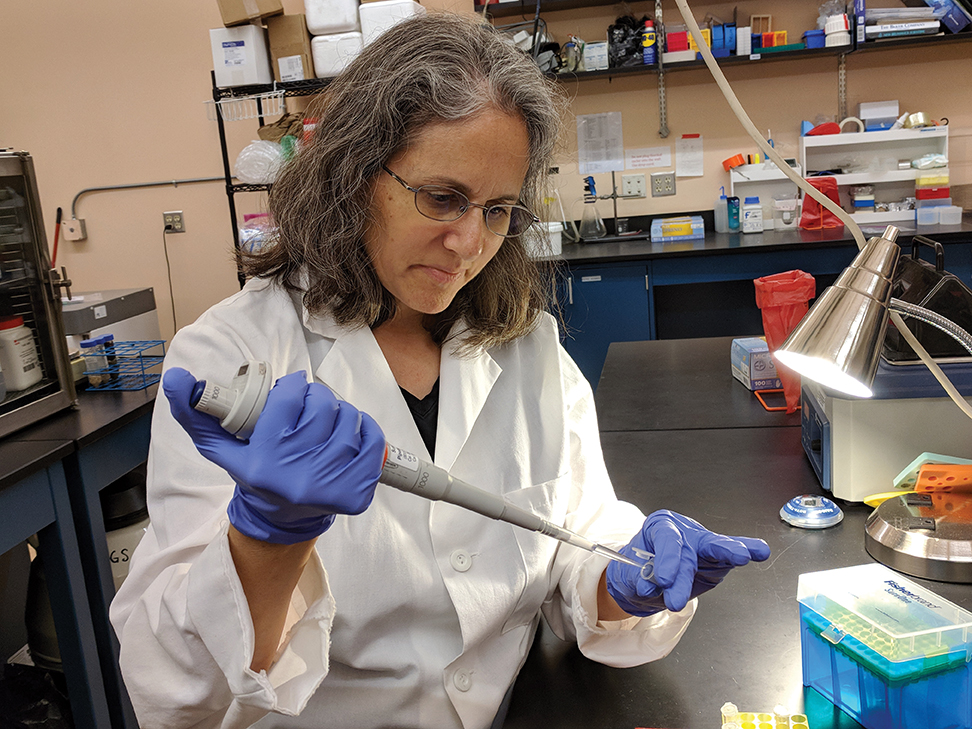Figuring out what you want to be when you grow up is hard enough the first time. Getting it right the second time around can be almost impossible, especially if you don’t know where to begin. We sought the advice of women who’ve successfully made their own transitions to guide you to your next phase.
By any measure, Patricia Gussin was successful enough during her 25-year career with Johnson & Johnson that she could step away from her job with pride. She started in medical research and clinical trials and moved her way up the management ladder. By the time she decided to retire in 2000, she was the worldwide vice president of J&J’s consumer pharmaceuticals. Upon leaving her corporate office, Gussin figured she would join a hospital board or maybe advise a small startup, but she never in her wildest dreams believed she would become a novelist. Yet, the process of putting her career in perspective lead her to cultivate her passion for writing. During long plane flights in the years leading up to her retirement, Gussin began to think back to her early years in medicine and how the era-defining events of the late 60s cast a shadow over her young life. So, she took out a notebook and tried to write down what it was like to go to medical school in Detroit in 1967.
“It was the year that riots consumed the city, and it was such a terrible, turbulent time,” she says. The worst riots occurred in July of that summer. “For 5 days Detroit burned, and there was looting and shooting everywhere.” The violence and property destruction eventually lead the federal and state government to send in the National Guard and two Army divisions to keep the peace. In the end, 43 people were dead, 1,189 were injured, 7,200 protesters were arrested, and more than 2,000 buildings were destroyed. “The city has never really been the same since.”
Gussin had a 3-year-old toddler and a 3-month-old infant at home when she started at Wayne State University School of Medicine in the heart of Detroit, and she gave birth to two more children over the course of her four years at medical school. She had her hands full, but she worked her butt off to say on top of her classes and care for her young family while also living at the epicenter of social and economic upheaval. “There were race riots across the country that summer,” she says. “And the following year, both Robert Kennedy and Martin Luther King Jr. were assassinated.”
As Gussin’s ideas took shape on paper, she thought about what an incredible backdrop to a story her time in Detroit would make. “So I decided to create a character very much like myself and turn all my notes into a novel.” Five years and 13 complete revisions later, Gussin completed Shadow of Death, which received a Best First Novel nomination from the International Thriller Writers. “I never had a clue as to where my writing would lead me,” she says. “But I had stumbled into something I loved, and I knew I would continue.” She has gone on to write six more novels since the first was published.
While it may seem like Gussin simply found her passion late in life, there’s far more to her successful transition to author than waking up one day as a fully-formed novelist. For Gussin and for most women, taking on a whole new career often requires an intense personal transformation, since our careers shape us as much as we shape them. They’re often the focal point of our interests and, if we’re lucky, our careers can bring out the very best in us.
A recent Stanford study found that people who painstakingly develop and nourish their career interests ended up being more successful than the ones who just blindly follow them. This means regularly stoking the fires of your career passions instead of trusting that they’ll always be there. “I started writing, and I stuck with it,” Gussin says. “And I put myself out there among other writers, and that bolstered me and made my writing seem more real to me. I saw these other people doing it, and believed that I could do it, too.”
This is a smart approach for any woman looking to make her own career change. While switching careers isn’t the risky move it once was, it still carries plenty of downsides. A recent survey released by the Bureau of Labor Statistics showed that companies in the tech, finance, and healthcare industries are actively hiring from outside their traditional labor pools. That said, changing course usually requires more than just revising your resume. You may need to head back to school, or you might have to accept a junior position at a time when you should be at the height of your first career.
But making a career change isn’t impossible, as the women in this story show. When done smartly and for the right reasons, embarking on a new career can make you happier than you’ve ever been.
I put myself out there among other writers, and that bolstered me and made my writing seem more real to me. I saw these other people doing it, and believed that I could do it, too.
—Patricia Gussin

Subject to Change
Career Coach Saoirse Downey suggests asking yourself these five questions when contemplating making a career change.
Do you need a full career change or just a career tweak?
Making some key changes to your current career may be all it takes to align it with your current interests. Look within your current organization or talk to your manager to see if you can move your career in the direction you want.
Will your new career pay your bills?
Even when you’re looking to have more purpose to your life, you won’t get far if the money isn’t there. It’s not like someone else is going to pay your mortgage.
Who do you know?
If you know people at an organization you’re interested in, they can open the door for your and provide introductions to managers that typically wouldn’t even look at you had you sent in your resume blindly.
What is actually required from the job you’re looking to move into?
You should shoot to fill at least 75 percent of the job requirements when applying to any new position because there are always going to be candidates that meet 80 to 90 percent of what a company is looking for.
What experience do you have that’s transferable to your new role and how will you fill in the gaps?
This is a biggie. You may have to go back to school or take some evening classes to best position yourself for your new role. You should do everything you can do to elevate your candidacy without going into debt.
Looking for more career advice? Check out treasurecareercounseling.com

I had a hard time figuring out the difference between what I could do and what I could do well and what I was excited about doing well. Once I knew, I didn’t want to spend my days doing anything else.
—Dawn Goldsmith

Science Project
Dawn Goldsmith was working for the Department of Justice (DOJ) in the Environmental Enforcement Section when she found herself looking for a new career direction. “It wasn’t enough for me just to know that what I was doing was productive and having a positive impact,” she says. “I also wanted to be more engaged in my daily work.” Goldsmith was only in her mid-30’s, but this feeling had been building for a long time. She frequently found herself more interested in what the scientists she worked with at the Environmental Protection Agency (EPA) were doing than what she was working on. It eventually dawned on her that it was really science she was interested in instead of the law.
Goldsmith embraced this gut feeling and decided to test the waters before making a wholesale career change, which she knew would difficult while raising her 2-year-old daughter (not to mention her second daughter who came along a year later). “I started taking science classes at night, just one at a time,” she says. “Just to see if it would go anywhere.” She stuck to this low-risk pace because she wanted to keep her job if all this science stuff didn’t work out and she changed her mind.
“It’s always best to see if there’s a way within your current environment to start obtaining the required skills you’ll need for where you want to move your career next,” says Saoirse Downey of Treasure Career Consulting. She’s been a career coach and recruitment advisor for more than 15 years, and she’s seen every kind of career change imaginable. “Staying within your environment could involve working with another department, seeing if you can get some additional project work, or just focusing on something that would be specifically relevant to your career interests.”
Making a career switch while remaining with the same organization you’re already working for, allows you draw upon your reputation, Downey adds. This makes it more likely for other people within the organization to give you an opportunity to expand your knowledge base. “As long as you can show you have core skills that would be transferable, for example, when going from finance to HR, you have a much better chance moving into that particular role within your organization because you’re a known quantity—you’re already a fit for the organization and its culture.”
While there wasn’t a hybrid science-lawyer department at the DOJ for Goldsmith to transfer into, her approach of testing the waters with night classes while maintaining her job as a lawyer gave her the time and the security to nurture her budding interest in microbiology. Despite the snail’s pace of her initial studies, there was only so far Goldsmith could move down the science track before it would take her out of the DOJ. And after three semesters of only taking one course at a time, her husband noted that she’d be 50 before she’d ever get her PhD if she continued at this rate. So she needed to commit.
After switching to a part-time schedule at the DOJ to finish her degree, Goldsmith eventually stepped away from her career as a lawyer and landed a fellowship at the University of South Florida’s College of Marine Science to study marine microbiology. Fast forward seven years and countless lab experiments later, and Goldsmith now has her PhD and is a molecular biologist at the U.S. Geological Survey. “I work in the lab of a researcher who studies the bacterial communities that live in cold water corals,” she says. “We’re trying to discover what bacteria live there and what functions they perform for the coral.” She adds that corals are vital ecosystems that serve as a home to thousands of other species. “We have to understand them and measure their baseline before the temperature and chemistry of our oceans change too much.”
While Goldsmith took the long way to find a career that she was passionate about, she now loves her job because she’s always learning. “Compared to other people, I realize that it took me a long time to figure out what interested me on a deeper level,” she says. “I had a hard time figuring out the difference between what I could do and what I could do well and what I was excited about doing well. Once I knew, I didn’t want to spend my days doing anything else.”
Dream Deferred
Geri Sanfillippo knew she wanted to be a nurse from an early age. In 1969, she graduated from high school and went off to nursing school. But midway through her first year, she suffered a back injury that caused her to return home to her family in Bristol, Pa. “I figured I would find a job and then go back to nursing school the following year,” she says. “So I started working as a service rep for Bell Telephone.” Eventually, Sanfillippo transferred to the marketing department, got married, had children, and remained with Bell for 18 years.
“In a way, I was forced to stay there since my husband was self-employed and I needed the benefits,” she says. “My intention was always to go back to nursing school, but life gets in the way, and you just do what you have to do.” As Bell Telephone morphed into AT&T, Sanfillippo rolled with the changes and found herself moving back to Levittown, Pa. When the eventual downsizing started and the company offered her an early out, she took it. “I was never comfortable in my first career because I didn’t really pick it. It just happened to me,” she says. “But as soon as this opportunity came up, I knew I could finally go where I belong.”
Sanfillippo enrolled in the nursing program at Capital Health and started taking classes at night so she could take care of her kids during the day. The program paid her tuition as long as she committed to work for the hospital when she completed her nursing degree. But, while she didn’t have to shoulder the financial burden of going back to school, she did invest an incredible amount of time in pursuit of her passion, especially as the program ramped up. “I would get the kids off to school, run to do my day classes over at the college, get those done, come home, pick up the kids from school, and feed them. Then I’d pick up my mother-in-law so she could watch the kids until my husband came home,” she says. “And I’d head off to night school and then come home at 10. It was a crazy lifestyle.”
Despite the intensity of the program, Sanfillippo loved the experience and knew that she had finally found her calling. “One of my instructors once told me that you don’t pick nursing—nursing picks you. And I think that’s true,” she says. “If you pick nursing because of the money and the opportunity to go from place to place, you’re not going to last in nursing. You have to love it.” This was especially true of her time as an emergency room nurse soon after she graduated, of which, she says, she benefitted from being older when she started.
“I brought a maturity to the emergency room that I didn’t have when I was younger,” she says. “I could critically look at a patient and think about what I could expect to happen next.” She also isn’t sure if she could’ve dealt with the ER emotionally when she was younger. “You see people who are sometimes at their worst moments and you get to help them, but it can be rough.” After being in the ER for 17 years, Sanfillippo eventually moved over to neurology to help build the stroke program there.
“I’ve been doing this for 10 years,” she says. “I’m certainly retirement age, but I’m not ready because I don’t want to leave this. I go home, and I still think about it. I’m on vacation, and I’m thinking about it. Because it’s what I love to do.” What more can you ask for from a second career?
A Wrinkle in Time
How to get your career back on track after a long break:
Getting back into the workforce is easier than most people realize. Start by reconnecting with the people you worked with before you took your time off while also extending your networking to your current friends and peers. Ask them out for coffee to learn more about their companies and relevant job opportunities. Maybe there’s an opening there, maybe there isn’t—bottom line, a personal referral from a colleague can go a long way to opening doors to new job opportunities.
When looking for a new position, you’ll get the best results if you apply for roles that align closely with the experience gained from your last position. The more alignment you can show, the more likely you’ll be regarded as a top candidate.
Whether it’s on your resume or in-person, the best approach to getting back in the game is to just tell your story. Be upfront and let your potential employers know that you took time off to have kids, for instance, or took care of a sick loved one. But take it one step further by saying that the break has made you more excited to re-enter the workforce. Don’t be afraid to own your experiences because they’ve enriched you personally over the years. Professionally, you can now position yourself as a mature, passionate, and motivated employee with several years of experience in your area of expertise. —Saoirse Downey





